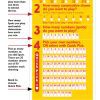Welcome to the exciting world of poker! Have you ever wondered how to set up a poker game? Well, you’re in luck because I’m here to show you the ropes. So, grab your chips, shuffle those cards, and let’s get started on this thrilling journey of hosting your very own poker night.
Setting up a poker game may seem daunting at first, but fear not! With a little guidance, you’ll be running the show like a pro in no time. From gathering the essentials to creating the perfect ambiance, I’ll walk you through each step to ensure your poker night is a hit.
Whether you’re planning a casual gathering with friends or a more intense tournament-like experience, this guide will equip you with everything you need to know. So, without further ado, let’s dive into the world of poker and discover how to set up a memorable and exciting game night.
1. Gather your players and choose a location.
2. Set the game rules, such as the type of poker, betting structure, and buy-in.
3. Prepare the necessary equipment, including a deck of cards and poker chips.
4. Assign a dealer or rotate the role among players.
5. Start the game by shuffling and dealing the cards.
6. Guide players through each round, including the betting phases.
7. Determine the winner and distribute the pot accordingly.
8. Enjoy the excitement and camaraderie that poker brings!

How to Set Up a Poker Game: A Comprehensive Guide
Poker is an exhilarating game of skill, strategy, and chance that has captivated players for centuries. Setting up a poker game can seem like a daunting task, especially for those new to the world of cards and chips. However, with the right knowledge and preparation, hosting your own poker game can be a fun and rewarding experience. In this article, we will provide you with a step-by-step guide on how to set up a poker game, from gathering the necessary supplies to understanding the rules and etiquette of the game.
1. Gathering the Supplies
To set up a poker game, the first step is to gather all the necessary supplies. Here’s a list of essentials you’ll need:
1. Poker Chips: These are the currency of the game and come in various denominations. It’s recommended to have at least 300 chips for a standard game.
2. Playing Cards: You’ll need a standard deck of 52 cards. It’s a good idea to have an extra deck on hand in case of wear and tear.
3. Poker Table: While not essential, a dedicated poker table adds to the authentic experience. You can also use a regular table with a felt table cover.
4. Dealer Button: This button signifies the dealer position and rotates clockwise after each hand.
5. Blind Buttons: You’ll need a small blind button and a big blind button to determine the forced bets in each hand.
6. Timer: If you’re planning to organize tournaments, a timer is essential to keep track of blind levels and breaks.
Once you have all the supplies, you’re ready to move on to the next step of the setup process.
2. Setting Up the Poker Game
Setting up a poker game involves arranging all the elements to create a comfortable and enjoyable playing environment. Follow these steps:
1. Prepare the Table: If you have a dedicated poker table, ensure it’s clean and free from any obstructions. If you’re using a regular table, place the felt table cover over it.
2. Arrange the Chips: Distribute the poker chips evenly among the players. Each player should receive a combination of different denominations to accommodate varying bet sizes.
3. Shuffle the Cards: Shuffle the deck thoroughly to ensure a random distribution of cards. The dealer should shuffle the cards multiple times before the start of each hand.
4. Assign the Dealer: Determine who will be the dealer for the first hand. The dealer position rotates clockwise after each hand, so everyone gets a chance to deal.
5. Set the Blinds: The blinds are forced bets that ensure action in each hand. The player to the left of the dealer places the small blind, and the player to their left places the big blind.
6. Start Dealing: The dealer starts dealing the cards clockwise, one by one, to each player. The number of cards dealt will depend on the type of poker being played.
Now that you have set up the poker game, it’s time to learn and understand the rules and strategies to make your game more enjoyable.
3. Understanding the Rules and Etiquette
To ensure a smooth and enjoyable poker game, it’s important to familiarize yourself with the rules and etiquette. Here are some key guidelines to keep in mind:
1. Know the Hand Rankings: Familiarize yourself with the different hand rankings in poker, from the highest-ranked Royal Flush to the lowest-ranked High Card.
2. Learn the Game Variations: Poker has numerous variations, such as Texas Hold’em, Omaha, and Seven-Card Stud. Each variation has its own set of rules and strategies.
3. Respect the Dealer’s Decisions: The dealer’s decisions are final. Respect their authority and refrain from arguing or questioning their judgments.
4. Protect Your Cards: Always protect your cards from being accidentally exposed or touched by other players. Use a card protector and keep your hand hidden until it’s your turn to act.
5. Avoid String Bets: A string bet is when a player makes multiple motions with their chips while betting. To avoid confusion, announce your intended bet amount before placing any chips in the pot.
6. Maintain Poker Etiquette: Be respectful to other players, refrain from excessive celebrations or taunting, and avoid discussing ongoing hands or revealing your cards before the showdown.
By following these rules and practicing good poker etiquette, you can create a friendly and enjoyable atmosphere for all players involved.
Additional Considerations
It’s important to remember that setting up a poker game is just the beginning. To ensure a successful and enjoyable experience, consider the following:
1. Learn and Practice Strategy
Understanding the basic rules is essential, but to excel in poker, you must also develop a solid strategy. Study different poker strategies, practice with friends or online, and continuously refine your skills.
2. Set Clear Rules and Expectations
Before the game begins, establish clear rules and expectations for the players. This includes details such as betting limits, house rules, and any additional guidelines to ensure fairness and smooth gameplay.
3. Provide Refreshments and Snacks
To enhance the overall experience, consider providing snacks and refreshments for the players. Keep it light and easy to consume, allowing players to enjoy the game without distractions.
In summary, setting up a poker game requires careful preparation, knowledge of the rules, and attention to detail. By gathering the necessary supplies, organizing the playing environment, and understanding the rules and etiquette of the game, you can host a successful and enjoyable poker game for your friends and family. Always remember to have fun and enjoy the camaraderie that poker brings.
Key Takeaways: How to Set Up a Poker Game?
- Choose a suitable location with enough space for players.
- Gather a standard deck of playing cards and poker chips.
- Assign a dealer or take turns dealing the cards.
- Set the rules and betting limits before starting the game.
- Enjoy the game and remember to have fun!
Frequently Asked Questions
Setting up a poker game can be a fun and exciting activity for friends and family. Whether you’re a beginner or an experienced player, here are some common questions and answers to help you get started.
1. What equipment do I need to set up a poker game?
To set up a poker game, you’ll need a deck of cards, poker chips, and a table. The deck of cards should be standard, with 52 cards and four suits. Poker chips come in various colors and denominations, so make sure to have enough for all the players. A poker table provides a dedicated space for the game, but if you don’t have one, a regular table or even a flat surface will do.
Additionally, you may want to have a dealer button to indicate who the dealer is during each hand. This can be a simple token or even a spare poker chip.
2. How many players can participate in a poker game?
The number of players in a poker game can vary, but most games have between 2 and 10 players. The specific number of players you can accommodate depends on the available seating and the preferences of the players involved. Keep in mind that more players can lead to longer games, so consider the available time before inviting a large number of participants.
If you have a larger group and don’t have enough seating, you can set up multiple tables and have players rotate between them. This allows everyone to still participate in the game and adds an element of excitement.
3. How do I determine the starting dealer?
To determine the starting dealer, you can use several methods. One common method is to have each player draw a card from a shuffled deck. The player with the highest-ranking card becomes the first dealer. In case of a tie, the suit can be used as a tiebreaker, with the order being spades, hearts, diamonds, and clubs.
Alternatively, you can use a dealer button, which is a small token passed around the table to indicate the dealer for each hand. To determine the starting dealer for the first hand, you can have players draw cards or use any other agreed-upon method. After the first hand, the dealer button is passed to the next player in a clockwise direction.
4. What are the basic rules of poker?
The basic rules of poker include the ranking of hands, the action during each betting round, and the various betting options available. The ranking of hands determines the winner of each hand, with the highest-ranking hand being the winner. Betting rounds allow players to place bets, raise the stakes, or fold their hands if they don’t want to continue. The specific betting options can vary depending on the variant of poker being played.
It’s essential to familiarize yourself with the rules of the specific poker variant you’re playing. Popular variants include Texas Hold’em, Omaha, and Seven-Card Stud. Each variant has its own set of rules, so make sure to understand them before starting the game.
5. What is the role of a dealer in a poker game?
The dealer in a poker game has several responsibilities. They are responsible for shuffling and dealing the cards, managing the betting rounds, and enforcing the rules of the game. The dealer ensures that each player receives the correct number of cards and keeps the game moving smoothly.
The dealer also plays a crucial role in maintaining the integrity of the game by preventing any cheating or unfair practices. They enforce the betting rules and ensure that all players have an equal opportunity to participate. If playing in a casual setting, players can take turns being the dealer, or you can assign one person to be the dedicated dealer throughout the game.
How to Host the Perfect Poker Home Game – Live Poker Basics
Summary
Setting up a poker game is easy! First, gather your friends and decide on the game and stakes. Then, prepare a comfortable space and gather all the necessary supplies. Assign someone to be the dealer and decide how long the game will last. Make sure to set clear rules and etiquette guidelines. During the game, remember to have fun and play responsibly. Poker can be a great way to spend time with friends and test your skills!









